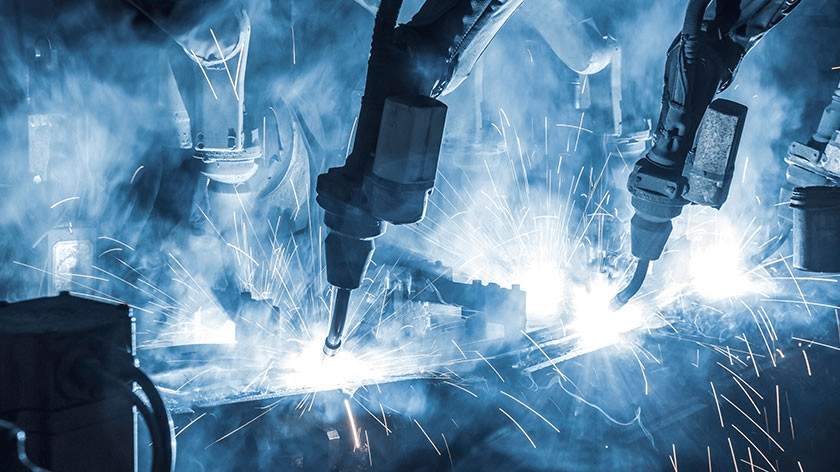Introduction
Harmonics in welding processes refer to the presence of unwanted electrical frequencies that can negatively impact the welding operation. These harmonics are generated due to various factors within the welding equipment and power distribution systems. Understanding and managing harmonics in welding are crucial for ensuring weld quality, prolonging equipment life, and promoting a safe working environment.
Causes and Effects of Harmonics in Welding Loads:
Factors Contributing to Harmonics Generation During Welding:
Harmonics are primarily caused by the non-linear behavior of welding machines and power sources. When the welding machine draws current from the power grid, the non-linear characteristics lead to harmonic currents that distort the normal sinusoidal waveform.
Impact on Welding Quality, Equipment, and Safety:
Harmonics can lead to irregular welding current and voltage waveforms, resulting in poor weld quality and reduced mechanical properties of the welds. Inconsistent welds may lead to defects, compromising the structural integrity of the welded components. Additionally, harmonics can cause increased wear and tear on welding equipment, leading to frequent breakdowns and maintenance issues. Moreover, harmonics can create electrical and magnetic interference, potentially causing safety hazards for both the welding operators and surrounding electrical systems.
Measuring and Analyzing Harmonics in Welding:
Importance of Harmonic Analysis in Welding Applications:
Performing harmonic analysis in welding applications is crucial to identify the presence and severity of harmonics. It helps in understanding the specific harmonic frequencies generated during welding and their impact on the overall welding process.
Methods for Measuring and Interpreting Harmonic Data:
Harmonics can be measured using power quality analyzers or harmonic analyzers. The collected data is then analyzed to assess the level of harmonics present and determine if they exceed acceptable limits set by industry standards and regulations.
Mitigation Techniques for Harmonics in Welding Loads:
Strategies to Reduce Harmonics, Including Filtering and Grounding:
One effective approach to mitigate harmonics is the use of harmonic filters. These devices are installed to reduce the amplitude of harmonic currents, allowing for a cleaner and more sinusoidal current waveform. Proper grounding of welding equipment and power sources is also essential to minimize the risk of harmonics.
Optimal Cable Routing and Harmonic Suppression Devices:
Proper cable routing and minimizing cable lengths can reduce parasitic inductances and capacitances, which contribute to harmonics. The use of harmonic suppression devices, such as chokes or reactors, can further mitigate harmonics and improve welding efficiency.
Best Practices for Harmonic Reduction in Welding:
Maintenance, Compliance, and Training for Harmonic Reduction:
Regular maintenance of welding equipment, including checking for loose connections and damaged components, can help prevent harmonic issues. Compliance with industry standards and guidelines for harmonic limits is essential to ensure safe and efficient welding operations. Providing training to welding operators and personnel about harmonics and their effects can promote awareness and proper handling of harmonic-related challenges.
Electrical switchboards for harmonic mitigation of welding loads

Switchboards can play a significant role in harmonic mitigation for welding loads by incorporating specific design features and components that help reduce and manage harmonics. Here are some ways switchboards can be made applicable for harmonic mitigation of welding loads:
Harmonic Filters: Switchboards can be equipped with harmonic filters to reduce harmonic currents generated by non-linear loads like welding machines. Harmonic filters are designed to absorb or divert harmonic currents, thereby minimizing their impact on the power distribution system. These filters can be installed at the switchboard level to address harmonics at the source.
Active Power Factor Correction (PFC): Switchboards with active power factor correction capabilities can help control harmonics and improve the overall power factor. Active PFC technology ensures that the connected welding loads draw a clean and nearly sinusoidal current from the power grid, reducing harmonic distortion.
Isolation Transformers: Switchboards with isolation transformers can help mitigate harmonics by reducing leakage currents and improving galvanic isolation between the welding equipment and the power grid. These transformers can help in breaking the path for harmonics to flow back into the power system.
Multiple Output Taps: Welding loads often require different voltage levels to accommodate various welding processes. Switchboards with multiple output taps can provide precise voltage adjustments, reducing the likelihood of overvoltage or under voltage conditions that could contribute to harmonics.
Sophisticated Monitoring and Control: Modern switchboards can be equipped with advanced monitoring and control systems that allow real-time measurement and analysis of harmonics. This data helps operators to proactively manage and respond to harmonic issues promptly.
Modularity and Expandability: Switchboards that are modular and easily expandable provide the flexibility to add harmonic mitigation devices, such as harmonic filters, as needed. This adaptability allows for future upgrades and adjustments to accommodate changing welding loads and harmonic profiles.
Proper Cable Routing and Shielding: Switchboards should be designed to facilitate proper cable routing and shielding for welding loads. Well-organized cables and shielded enclosures help minimize electromagnetic interference and reduce the chances of coupling harmonics into adjacent circuits.
Compliance with Standards: Switchboards designed for harmonic mitigation should comply with relevant industry standards and guidelines. Compliance ensures that the switchboards can handle harmonics effectively and safely.
Training and Awareness: Proper training and awareness of harmonic issues among personnel responsible for operating and maintaining switchboards can help identify potential harmonic-related problems early on and take appropriate corrective measures.
By incorporating these features and considering harmonic mitigation techniques during the design and installation of switchboards, industrial facilities can effectively manage harmonics caused by welding loads. A well-designed switchboard with harmonic mitigation capabilities not only enhances the quality and safety of welding operations but also contributes to the overall power quality of the electrical system.
Conclusion:
Understanding harmonics in welding is critical for achieving high-quality welds, prolonging equipment lifespan, and ensuring the safety of welding operations. By identifying the causes and effects of harmonics, implementing harmonic analysis, and employing effective mitigation techniques, welders and industries can optimize their welding processes and reduce the negative impact of harmonics. Emphasizing best practices and real-world examples can inspire a culture of proactive harmonic reduction, leading to improved productivity and a safer working environment in welding applications.




